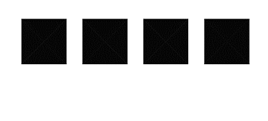

In the recent years, there has been a creation of large urban forgotten spaces in Tehran. These spaces are the production of modernization and development of the dead spaces of the city. They are a part of the larger area of the city and they have the spatial capacity in a local and even regional scale. Finding this spaces and taking a fresh look at them can help revitalize the dead parts of the city. It should be noted that people during the process of urban modernization, spend most of their time outdoor and they need new places that can provide their needs. In this situation we have the opportunity to transfer the forgotten spaces into urban concentration spots. On the other hand, land is highly valuable in Tehran and creating a cultural complex requires a lot of costs and destruction of buildings and transforming them, This will result in loss of collective memories. Therefore it’s better to find the answer in forgotten and lost areas, thus we chose to organize the space under the Mirdamad Bridge in Tehran so we decided to send a proposal to the municipality of Tehran, named “Organizing the Forgotten Urban Spaces (Organizing the Space Under Mirdamad Bridge)” that was finally approved.
The width of the bridge is 14.1m and it height is 7m. The structure of the bridge is combination of concrete and steel and has a contiguous span. Due to the focus of offices and commercial spaces around it, there’s a lot of pedestrians in the area, therefore we decided this space will become a museum which people pass through, and then we began to design an open anthropology museum. Three options attracted our attention in the design process:
1- Too much noise and sound produced by vehicles around and focus of this sounds under the Bridge
2- Short period of time which people stop in this space
3- Insight from the outside due to security issues
At first we started analyzing the pedestrians movement and their following paths under the bridge, then some openings were created in this space, placing showcases in this range under the pedestrian’s eye level was the next step (a miniature replica of Isfahan). Creating an acoustic space and covering the columns was the next important issue, to achieve these two goals we started creating an arch and dome-like geometry, by doing this we created an acoustic mode in the roof and a bit of that mode for the body, along that path we covered the pillars. In results we designed an open museum under the Mirdamad bridge with minimum manipulation of that space.